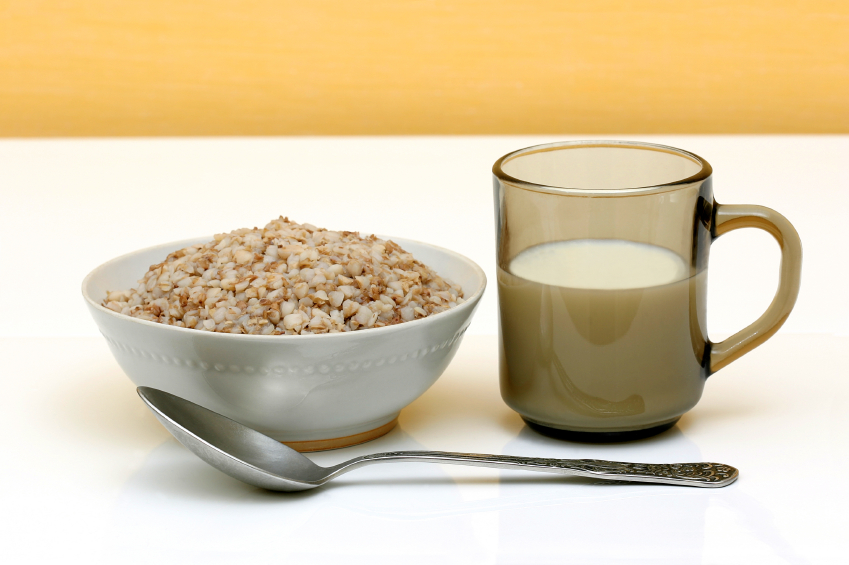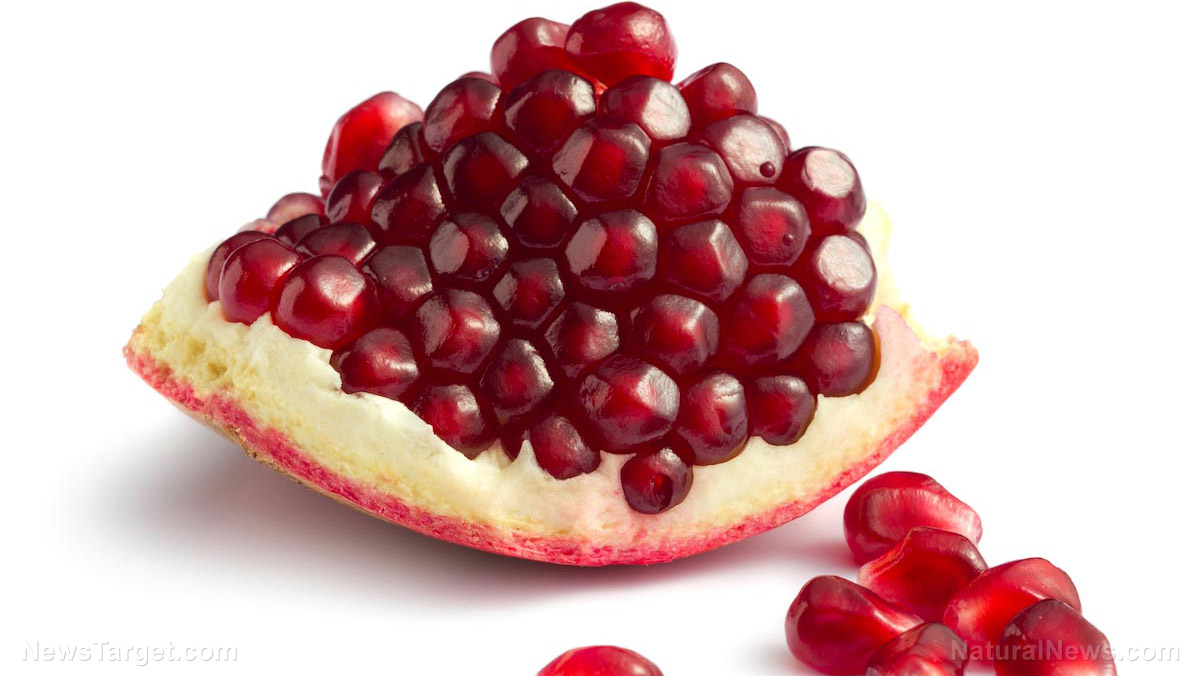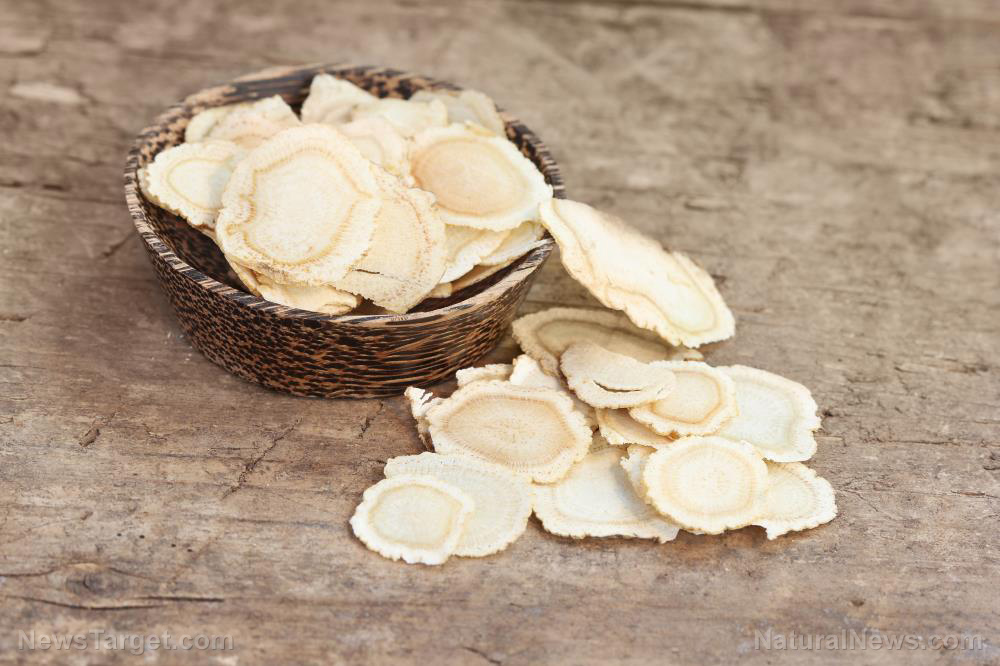Buckwheat is a nutrient-dense, antioxidant-rich, and gluten-free alternative to common cereal grains
04/26/2019 / By Zoey Sky

Buckwheat is a gluten-free and nutritious alternative to cereal grains that should be added to your diet. Buckwheat boosts heart health, and it is often used to manage conditions such as Type 2 diabetes.
Buckwheat is a type of pseudocereal, and this group of foods includes seeds that are consumed like cereal grains. However, pseudocereals don’t grow on grasses. Other common pseudocereals include amaranth and quinoa.
Since buckwheat is not related to wheat, it is gluten-free. Buckwheat can be processed into flour, groats (which are used like rice), and noodles. It is also used to make buckwheat tea. Buckwheat grains are usually brown and irregular in shape.
Two types of buckwheat are grown for food: common or sweet buckwheat (Fagopyrum esculentum) and tartary or bitter buckwheat (F. tartaricum).
The nutrient profile of buckwheat
Buckwheat groats and flour are rich in protein, polyphenols, and minerals.
Groats contain vitamins and minerals like:
- B vitamins (e.g., thiamin/B1, riboflavin/B2, and pyridoxine/B6)
- Calcium
- Copper
- Magnesium
- Manganese
- Potassium
- Selenium
- Zinc
Unlike true cereal grains, the protein content of buckwheat groats is well-balanced and extremely high. Groats have a biological value above 90 percent, which means most of its protein content is absorbed and integrated into the human body.
Buckwheat has all nine essential amino acids and it is rich in lysine, an amino acid that can be found in limited quantities in cereal grains.
Buckwheat groats have a high antioxidant and flavonoid content, which qualify them and other buckwheat-enriched products as functional foods.
Buckwheat groats are full of antioxidant compounds like glutathione. Groats also have a very high polyphenol content, including catechins and flavonoids such as rutin and quercetin. Both rutin and quercetin are biosynthesized by plants to protect themselves from UV radiation, diseases, and predators. (Related: Buckwheat is an underutilized crop that holds great antioxidant potential.)
Modern research on the health benefits of buckwheat
Buckwheat as a gluten-free “grain”
Since buckwheat is gluten-free, people with celiac disease or non-celiac gluten sensitivity (NCGS) can safely consume it. Celiac disease makes a person hypersensitive to gluten, which means they have a difficult time digesting food that contains this particular protein.
In a randomized, crossover trial with two intervention phases, researchers worked with 19 patients diagnosed with NCGS. The study lasted for 12 weeks and volunteers either consumed a diet of buckwheat products or maintained their normal gluten-free diet without buckwheat supplementation.
During the intervention period, the participants who consumed buckwheat products reported a significant reduction in the severity of abdominal pain and bloating.
Cardiovascular health
Green buckwheat tea has bioflavonoids that help improve circulatory health. To illustrate, rutin has been shown to increase the elasticity of blood vessels and arteries, improves peripheral circulation, reduces the risk of atherosclerosis and hypertension, and lowers capillary fragility.
Oral health
The bark, roots, and seeds of polyphenol-rich herbs are powdered and used as natural antibacterial and anti-inflammatory toothpowders to improve oral hygiene and gum health.
In a clinical study, researchers found that participants who brushed their teeth twice daily with tartary buckwheat flour toothpowders had a 62 percent improvement in periodontitis and bleeding gums. The researchers posit that the improvements in gum tissue integrity were due to buckwheat’s vitamin and mineral contents, along with rutin and quercetin’s protective anti-inflammatory effects.
Type 2 diabetes
In places like China and Taiwan, buckwheat is used to manage conditions such as Type 2 diabetes mellitus (T2DM) along with associated cardiovascular, renal, and ocular complications.
The regular consumption of buckwheat products is linked to a lower incidence of hyperglycemia and improved glucose tolerance.
Buckwheat has D-chiro-inositol (DCI), a primary mediator of insulin metabolism. DCI also improves glucose utilization and lowers blood pressure, glucose concentrations, and plasma triglycerides.
Buckwheat honey
Like Manuka honey from New Zealand, buckwheat honey has antioxidant and antibacterial properties. But even though buckwheat honey offers health benefits, it isn’t widely consumed because it has a dark, amber color, strongly spiced odor, and malty flavor.
Unlike other types of honey, buckwheat honey has a higher protein content. It also contains more calcium, iron, magnesium, manganese, and zinc.
Take note that consuming high amounts of buckwheat or buckwheat products may cause IgE antibody-mediated allergic reactions. Additionally, buckwheat sprouts may cause photosensitization or skin irritation after sunlight exposure. Consult a healthcare professional before adding buckwheat to your diet to avoid these complications.
The pseudocereal buckwheat won’t just increase your heart health; it can also increase your dietary intake of calcium, iron, fiber, and protein.
Sources include:
Submit a correction >>
Tagged Under:
buckwheat, buckwheat honey, cardiovascular health, disease prevention, food cures, food is medicine, functional food, gluten free, grains, natural cures, natural ingredients, oral health, Type 2 Diabetes
This article may contain statements that reflect the opinion of the author
RECENT NEWS & ARTICLES
BloodSugar.News is a fact-based public education website published by Blood Sugar News Features, LLC.
All content copyright © 2018 by Blood Sugar News Features, LLC.
Contact Us with Tips or Corrections
All trademarks, registered trademarks and servicemarks mentioned on this site are the property of their respective owners.





















